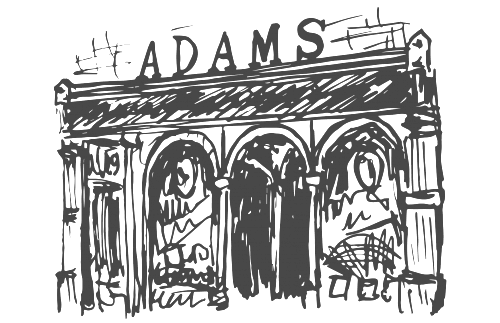Walton Adams (b.1842- d. 1934) started Reading’s longest running photographic business, The Art and Science studio on Blagrave street. Like many pioneering photographers Walton was an inventor, and made a significant contribution to early photography.
Walton worked with Dr Richard Leach Maddox and together they invented the dry gelatine plate process. The process revolutionised Victorian photography by industrialising the process of making plates: It meant more people could take more photographs because there was no longer a need to work with dangerous chemicals. Dry plate technology also contributed to the birth of cinema, because the process made it possible to coat strips of celluloid in light sensitive chemicals for the first time.
 Walton was also known for his portraits, In Reading he took portraits of notable local people like the mayor and founder of Jackson’s corner, Edward Jackson.
Walton was also known for his portraits, In Reading he took portraits of notable local people like the mayor and founder of Jackson’s corner, Edward Jackson.
His reputation as a portrait photographer extended well beyond Reading and he was invited to take photographs of David Lloyd George, H.H. Asquith and Queen Victoria and her family to name a few. You can find examples of his work in the National Portrait Gallery
Walton’s studio was very much a family business, Adam’s seven children grew up in the shop assisting their father. In recognition of this the Art and Science Studio was later renamed Adams and Sons. After honing their skills in their father’s business Walton’s sons Christopher and Marcus went on to start their own businesses. Walton’s grandson Gilbert also had great success in the field.

